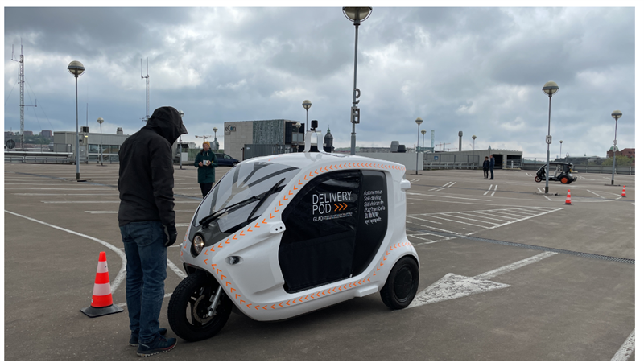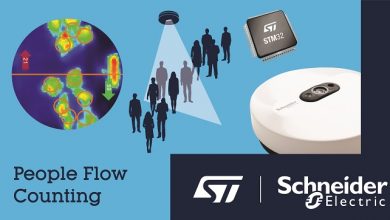Testing interactions between self-driving vehicles and pedestrians in central Gothenburg

How can self-driving vehicles interact with pedestrians in traffic? This has been investigated by the research project GLAD (Goods delivery during the Last mile with Autononomus Driving vehicles). A study with self-driving delivery vehicles and pedestrians was carried out in the parking garage of the central Gothenburg shopping center Nordstan.
The GLAD project aims to investigate and create knowledge about trust and acceptance for self-driving delivery vehicles in Sweden. The project is funded by the Swedish Transport Administration. RISE, Aptiv, Clean Motion, Combitech and Halmstad University conducted the user study.
– Our starting point in this study was that you can support traffic interaction based on a vehicle’s movement pattern, including braking and placement in the lane, which is confirmed by our preliminary results, says Azra Habibovic, senior researcher at RISE.
The purpose of the study was to investigate, in a controlled manner, how pedestrians interact with and experience small self-driving delivery vehicles. Each pedestrian experienced different traffic situations and interpretated the vehicle’s intention in the given situation. The vehicle’s driving behavior was designed to communicate the vehicle’s intention in various ways, such as giving way to a pedestrian. The study lasted for two days and involved study participants from the general public.
– A self-driving vehicle that clearly communicates its intention is expected to be more reliable and easier to accept in society, says Azra Habibovic.
However, there are challenges around this as movement patterns can be interpreted in different ways in different situations. Traffic interactions of this kind are explored by Victor Fabricius, PhD student at RISE and Halmstad University.
For Aptiv, which develops sensors and algorithms for self-driving systems, the insights from the study are valuable and give a sense of how driving behavior can be used in communication with pedestrians.
– For us, it is important to test the technology carefully before we take it to real traffic and to get feedback from the public at an early stage of development is valuable, says Henrik Clasen, Technical Manager Safety Systems at Aptiv.
With its existing technology for coordinating self-driving vehicle fleets, ATMS (Autonomous Transport Management System), Combitech further develops in this project the ability to handle goods deliveries by self-driving vehicles.
– To be able to test sending transport assignments and other commands to the vehicles in a realistic context is valuable for evaluating and improving our solution, says Gustaf Bergström, Software Engineer at Combitech.
Clean Motion sees a future where small self-driving delivery vehicles are part of the supply chain in Sweden, especially when it comes to deliveries during the first and last mile.
– For this to become real, it is important that these vehicles behave in an acceptable way in traffic. Being able to test this in a realistic and unique environment in central Gothenburg is fantastic, says Christoffer Sveder, Director Commercial Operations from Clean Motion.
The GLAD research project has a broad approach, from technology and the human-machine interaction, to business models and requirements for the digital and physical infrastructure.
– It will provide unique knowledge to industry, infrastructure managers, authorities, and the research community, which is important for us at the Swedish Transport Administration to support, states the Swedish Transport Administration’s strategist Hamid Zarghampour.





